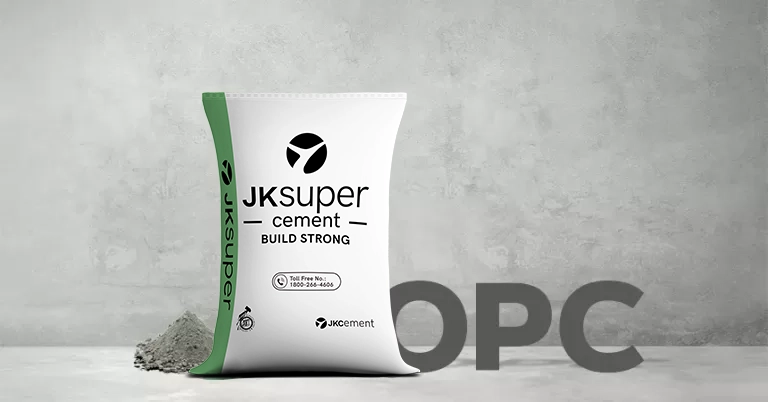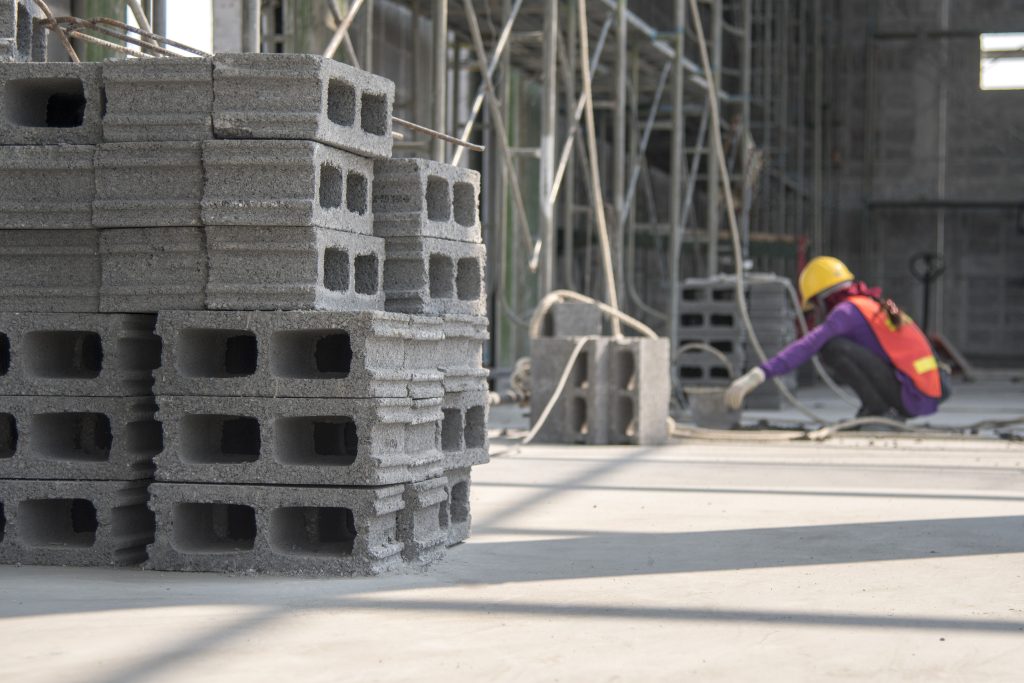Concrete is a mixture of cement, water and aggregates like sand or gravel. The ratio of each of these components determines the concrete’s workability, strength and other such factors. Depending on the construction needs, concrete with a prefixed ratio can be used or a professional can ascertain the ratio based on the construction requirements. In this article, we talk about concrete mix ratio and its types.
What is Concrete Mix Ratio?
Concrete mix ratio or proportioning is a process that involves selecting the suitable ingredients and determining their quantities to produce a concrete mix of that is easy to work with but also is high in strength and durability. The proportion of the concrete ingredients will depend on their characteristics.
The variables in concrete are water, cement and aggregates. To form a concrete mix, the binding agent, i.e., the cement, forms a paste that helps bind the aggregates. For an ideal concrete mix the following factors must be considered:
- ratio of cement paste to aggregates,
- ratio of water and cement in the cement paste
- ratio of fine aggregate (sand) and coarse aggregates
- Use of any admixtures to get the desired quality of concrete
Types of Concrete Mix Ratio1
Depending on the proportion of its constituents, concrete mix ratio can be of the following types:
-
Nominal Mix Concrete
In a normal mix concrete, the proportions of concrete are prefixed. Typically, nominal mix is used for small-scale constructions. For instance, in the case of M15 grade concrete, the ratio of cement to sand to aggregate is 1:2:4 which is a fixed ratio. Concrete grades from M5 to M20 come under the category of nominal mix concrete.
The cement content for any nominal mix shall be proportionately increased if the quantity of water in the mix has to be increased. Reasons for increasing the water content can include concrete placement or compaction issues,
Proportions for Nominal Mix Concrete
| Grade of Concrete | Total Quantity of Dry Aggregates by Mass per 50kg of Cement to be taken as the sum of the individual masses of Fine and Coarse Aggregates, kg, Max | Proportion of Fine Aggregate to Coarse Aggregate (By Mass) | Quantity of Water per 50kg of Cement |
| M5 | 800 | Generally, 1:2, but subject to an upper limit of 1:1.5 and a lower limit of 1:2.5 | 60 |
| M7.5 | 625 | 45 | |
| M10 | 480 | 34 | |
| M15 | 330 | 32 | |
| M20 | 250 | 30 |
*Note that the ratio of the fine to coarse aggregates should be adjusted from upper limit to lower limit progressively as the grading of fine aggregates becomes finer and the maximum size of coarse aggregate becomes larger. Graded coarse aggregate shall be used.
-
Standard Concrete Mix
In a standard concrete mix, the proportions are one part cement, two parts sand and four parts aggregate. Concrete grades from M25 to M50 fall under the category of standard concrete mix.
-
Design Mix Concrete
When it comes to design mix concrete, a professional civil engineer determines the mix ratios after analysing the properties of each ingredient. The ratio is determined according to the requirements of the quality and strength of concrete. Various additives can be added to obtain the desired strength of concrete per the construction requirements.
Grades of Concrete
The following table comprises data on the various grades of concrete and their corresponding concrete ratios:
| Type of Concrete | Concrete Grade | Mix Ratio(Cement : Sand : Aggregates) | Characteristic Compressive Strength of Concrete at 28 Days in |
| Ordinary Concrete | M5 | 1:5:10 | 5 N/mm2 |
| M7.5 | 1:4:8 | 7.5 N/mm2 | |
| M10 | 1:3:6 | 10 N/mm2 | |
| M15 | 1:2:4 | 15 N/mm2 | |
| M20 | 1:1.5:3 | 20 N/mm2 | |
| Standard Concrete | M25 | 1:1:2 | 25 N/mm2 |
| M30 | Design Mix | 30 N/mm2 | |
| M35 | Design Mix | 35 N/mm2 | |
| M40 | Design Mix | 40 N/mm2 | |
| M45 | Design Mix | 45 N/mm2 | |
| M50 | Design Mix | 50 N/mm2 | |
| High Strength Concrete | M55 | Design Mix | 55 N/mm2 |
| M60 | Design Mix | 60 N/mm2 | |
| M65 | Design Mix | 65 N/mm2 | |
| M70 | Design Mix | 70 N/mm2 |
Design mix concrete is preferred over nominal mix. However, an engineer-in-charge may permit nominal mix for grades M20 or lower.
Concrete Proportioning Methods2
Various methods used to ascertain the ratio of cement, sand and aggregate are explained below:
-
Arbitrary Method
In arbitrary method, the proportion of cement, sand and coarse aggregates are arbitrarily chosen. The quantity of water in the cement paste is adjusted per the desired workability. For foundations and mass concrete work, the preferred concrete mix ratio is 1:4:8 while normal construction work can work with rations 1:1.5:3 and 1:2:4. Construction work that requires a high strength concrete subsequently requires higher grade concrete with ratio 1:1:2.
-
Fineness Modulus Method
Fineness modulus is an index that describes the relative sizes of coarse and fine aggregates. Coarse and fine aggregates are sieved through Indian Standard (IS) sieves of sizes 80mm, 63mm, 50mm, 40mm, 31.5mm, 25mm, 20mm, 16mm, 12.5mm, 10mm, 600µm, 300µm, 212 µm, etc.
The coarser the aggregate the higher will be the fineness module and the finer the aggregate the lower the fineness module. A mix of fine and coarse aggregate tends to be more economical.
-
Maximum Density Method
This method of concrete mix design is based on the idea that a concrete mix is generated by proportioning its aggregates in such a way that the heaviest weight for the same volume yields the densest concrete. As a result, a box is filled with variable amounts of fine and coarse particles in this process. For the work, the proportion that produces the most weight is used.
FAQs
From where are aggregates sourced?
Fine and coarse aggregates are obtained from sand and gravel mines, quarries, underground sediments, etc. The aggregates must comply with IS 383.
Can sea water be used to mix concrete?
Mixing concrete with sea water is not recommended due to the presence of harmful salts. Also, if we sea water is used in reinforced cement concrete, it can corrode the steel reinforcements, consequently weakening the concrete structure.
What is target mean strength of concrete mix?
The target strength of the concrete depends on its characteristic compressive strength at 28 days. This value should be added by 1.65 times the standard deviation.
Target Mean Strength = Characteristic Strength + 1.65 σ, where σ is the standard deviation.
*Disclaimer: The information provided above is for general purpose and should not be used as a substitute for professional advice.
















